What is a heat sealer used for and what are the different types available?
592
A heat sealer is a machine that is used to create a seal (using heat) on a plastic bag or other types of plastic. There are many types and forms of heat sealers available that will suit depending on what you are sealing and what type of seal you are after.
If you click on any of the links you will see videos for better explanations of how each are used.
Impulse Heat Sealer / Desk Top Bag Sealer: This is the basic scissor action model which has a range of machines to suit different sealing lengths from 100mm through 1000mm. When the scissor arm is depressed on the plastic bag, or roll of poly tubing, it will fuse the plastic together to form a seal. They usually have a flat wire that create a 2mm wide flat seal. Some impulse heat sealers also have cutters which enables you to cut off any excess plastic, or in the case of poly tubing you would be able to cut the bag length from the roll after sealing.
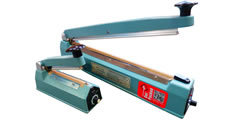
Clam Shell Heat Sealer: These are used primarily when you have clamshell plastic food containers. Once the food or items are placed inside the clamshell container, you would use the hand held clam shell heat sealer to spot weld/seal around the container. This not only seals the container closed but prevents tampering and pilfering of the product.
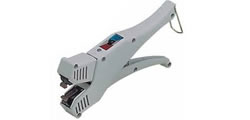
Constant Heat Roller Sealer / Hand Wheel Sealer: This is a hand roller heat sealer that literally rolls the teflon coated heated roller over the plastic bag and the welds the plastic together creating a seal. As this is a roller it can create round seals and is able to create a round or oval seal with a 57mm diameter. The heat is adjustable between 30-220 degrees Celsius.
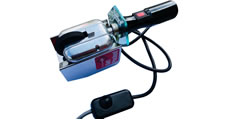
Pedestal Heat Sealers: These would include foot operated heat sealers, some with dispensers to hold rolls of poly tubing, other with adjustable heads so that the angle of the heat sealer can be adjusted to suit the angle of the bag (adjustable from horizontal to vertical). We also have a Constant Heat sealer with the heat coming from both the upper and lower jaws that allows for thicker bags – and quicker production speeds.
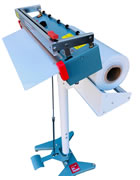
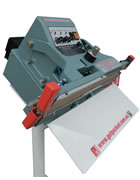
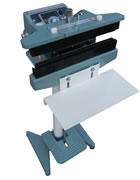
Hand Held Portable Constant Heat Sealers: We have the Furtura Portable heat sealer with heated twin jaws that are squeezed closed (by hand) which create the seal and one type for cellophane bags, and another type for Polyethyene bags. We also have the Hand Held Super Poly Sealer which come in seal lengths from 280mm to 630mm, making them great to seal large, heavy bags as you take the sealer to the bag (instead of the bag to the sealer). This Super Poly Sealer will even seal closed Bubblewrap as is can seal plastic up to 2 x 250um.
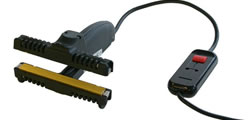
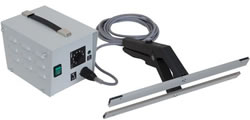
Desk Top L-Bar Heat Sealer: This is used with a roll of shrink film where the product is placed within the fold of shrink film, and then place on the plate of the L-Bar Sealer which when depressed will create an L-shaped seal. The fold of the shrink film will create one sealed edge, the previous L-bar seal will have left another sealed edge on the shrink film, and when the item is placed between the fold and the one sealed edge and pulled onto the plate of the L-bar sealer, the L-bar will create the final two seals (in an L-shape). Please follow the link to view the video. The desk top L-bar sealer is used in conjunction with a heat gun which when heat is applied to the shrink film, the film shrinks around the product creating a professional and neat looking sealed package.
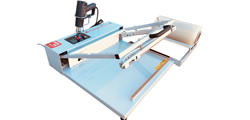
Shrink A Pack: is much the same as the Desk Top L-Bar Sealer, but the dispenser for the shrink film is included as well as the heat gun – but the sealer is a one sided scissor arm action, so an extra seal has to be manually made.
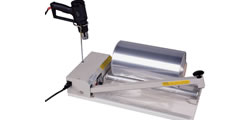
Automatic Heat Sealer: This is a bench top mounted heat sealer where you can set a timer and a foot operation for more operator control. It is a heavy duty model that can seal up to 2 x 200um thick film or bags. Different models are available with different length and width seals.
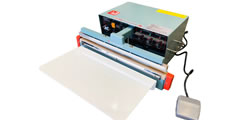
Beyond heat sealers are Heat Shrink Machines (or shrink wrappers) that not only seal, but will shrink the film around the product – and so the outcome is slightly different.
For important tips on using heat sealers please click on this link.







